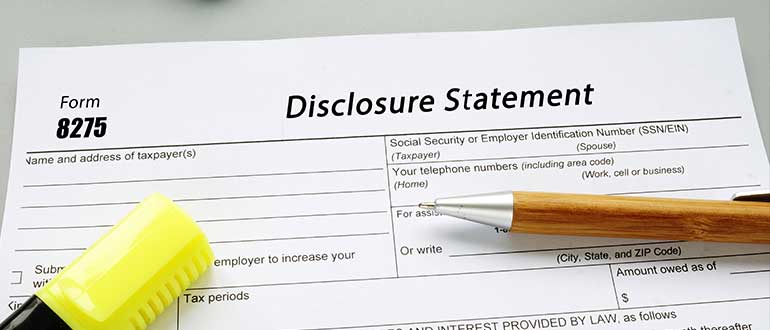
IRS Form 8275, Disclosure Statement, is used to provide additional information to the Internal Revenue Service (IRS) regarding positions taken on a tax return. Taxpayers use Form 8275 when they have taken positions on their tax return that are contrary to the IRS’s regulations and need to disclose their reasons for doing so. In this post, we will discuss the use of Form 8275 in detail and explain its significance in tax compliance.
What Is Form 8275?
Form 8275 is a disclosure statement that taxpayers use to explain a position taken on their tax return that does not comply with IRS regulations. The form is used to provide the IRS with information about a taxpayer’s position, the relevant tax laws and regulations, and the reasons for the position taken. By disclosing this information on the form, taxpayers can avoid penalties and interest if their position is later challenged by the IRS.
Why Is Form 8275 Used?
The primary reason for using Form 8275 is to disclose positions that are contrary to the IRS’s regulations. Taxpayers may have taken such positions inadvertently or deliberately, and the form provides a mechanism for them to explain their reasoning. The IRS uses the information provided on the form to evaluate the taxpayer’s position and determine whether penalties or interest are warranted.
When Should Form 8275 Be Used?
When a taxpayer takes a position on their tax return that contradicts the rules of the IRS, Form 8275 should be used. This may be due to a lack of understanding of the tax laws or a deliberate decision to take a position that is not supported by the law. In either case, the taxpayer should use Form 8275 to disclose their position and provide the IRS with the necessary information.
What Information Is Required on Form 8275?
Taxpayers must fill out Form 8275, which requests information about the stance they took on their tax return, the applicable tax laws and regulations, and the justifications for their stance. The form also requires the taxpayer to sign a declaration stating that the information provided is true, accurate, and complete to the best of their knowledge.
What Are the Consequences of Not Using Form 8275?
If a taxpayer does not use Form 8275 to disclose a position that is contrary to the IRS’s regulations, they may be subject to penalties and interest if the position is later challenged by the IRS. The penalties and interest can be significant and may result in the taxpayer owing more money than they would have if they had disclosed the position on Form 8275.
How Does Form 8275 Impact the Audit Process?
The IRS might examine Form 8275 during the audit process if a taxpayer used it to disclose a position they took on their tax return. The IRS will evaluate the taxpayer’s position and determine whether the position is supported by the law. If the position is not supported by the law, the IRS may assess penalties and interest.
How Long Should Taxpayers Keep a Copy of Form 8275?
Taxpayers should keep a copy of Form 8275 and any supporting documentation for at least three years from the date they filed their tax return. The IRS may request a copy of the form during an audit, and taxpayers should be able to provide a copy if requested.
Can Form 8275 Be Used to Disclose Positions Taken on Amended Returns?
Yes, Form 8275 can be used to disclose positions taken on amended returns. If a taxpayer discovers an error on their tax return and files an amended return, they should use Form 8275 to disclose any positions taken on the amended return that are contrary to the IRS’s regulations.
Can Form 8275 Be Used to Disclose Positions Taken on State Tax Returns?
Form 8275 is a federal form and is used to disclose positions taken on federal tax returns. However, some states may have similar forms or require taxpayers to disclose positions taken on their state tax returns. Taxpayers should check with their state’s tax authority to determine if they need to disclose positions taken on their state tax returns.
Are There Different Versions of Form 8275?
There are two versions of Form 8275: Form 8275 and Form 8275-R. Positions taken on a tax return for a current year are disclosed using Form 8275, whereas positions taken on a tax return for a prior year are disclosed using Form 8275-R. Taxpayers should use the appropriate version of the form based on the tax year in question.
Form 8275 is an important tool for taxpayers who have taken positions on their tax returns that are contrary to the IRS’s regulations. By disclosing their position and providing the necessary information on the form, taxpayers can avoid penalties and interest if their position is later challenged by the IRS. Taxpayers need to understand when and how to use Form 8275 to ensure compliance with tax regulations and avoid potential penalties.
